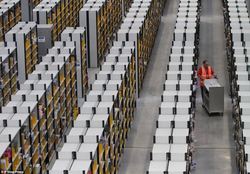Houston, we've had a product here
If we take the product of all natural numbers a and their inverses a − 1 , we get 1, because we can use the one-to-one map a → a − 1 and therefore

P = 1 × 2 2 × 3 3 × 4 4 × ⋯ = a ∈ N ∏ a a − 1 = a ∈ N ∏ 1 = 1 .
If instead, we use the one-to-one map a → a − 1 1 , the product seems to be larger than 1, because every term in the product is greater than 1:
P = 1 × 2 × ( 2 3 × 3 4 × 4 5 ) × ⋯ = 2 a > 2 ∈ N ∏ a − 1 a = ∞ .
Finally, if we pick a → a + 1 a , the product seems to be zero.
Something is wrong. What's the deal?
This section requires Javascript.
You are seeing this because something didn't load right. We suggest you, (a) try
refreshing the page, (b) enabling javascript if it is disabled on your browser and,
finally, (c)
loading the
non-javascript version of this page
. We're sorry about the hassle.
2 solutions
I think none of the solutions is correct. With a/(a-1) the solution is infinite as (... x/y z/x ... => ... 1/y z/1 ...) in the hypothetical final division the result is ... ∞/1. If we take a/(a+1) the hypothetical final division becomes ... 1/∞ which is actually zero. For sure all divisions by zero and ∞ are not well defined, but if we have a one on the other side of the division we can argue a stalemate.
Some may define the convergence of product equivalently as the sum of the logged terms. It follows that the series of a n = ln n n + 1 does not converge absolutely, hence the series of the above is not well-defined, and the product given is not well-defined,
With the map: a → a − 1 a P = a → ∞ lim a = ∞ And with the map: a → a + 1 a P = a → ∞ lim a + 1 1 = 0 So the answer is: This product is not well-defined